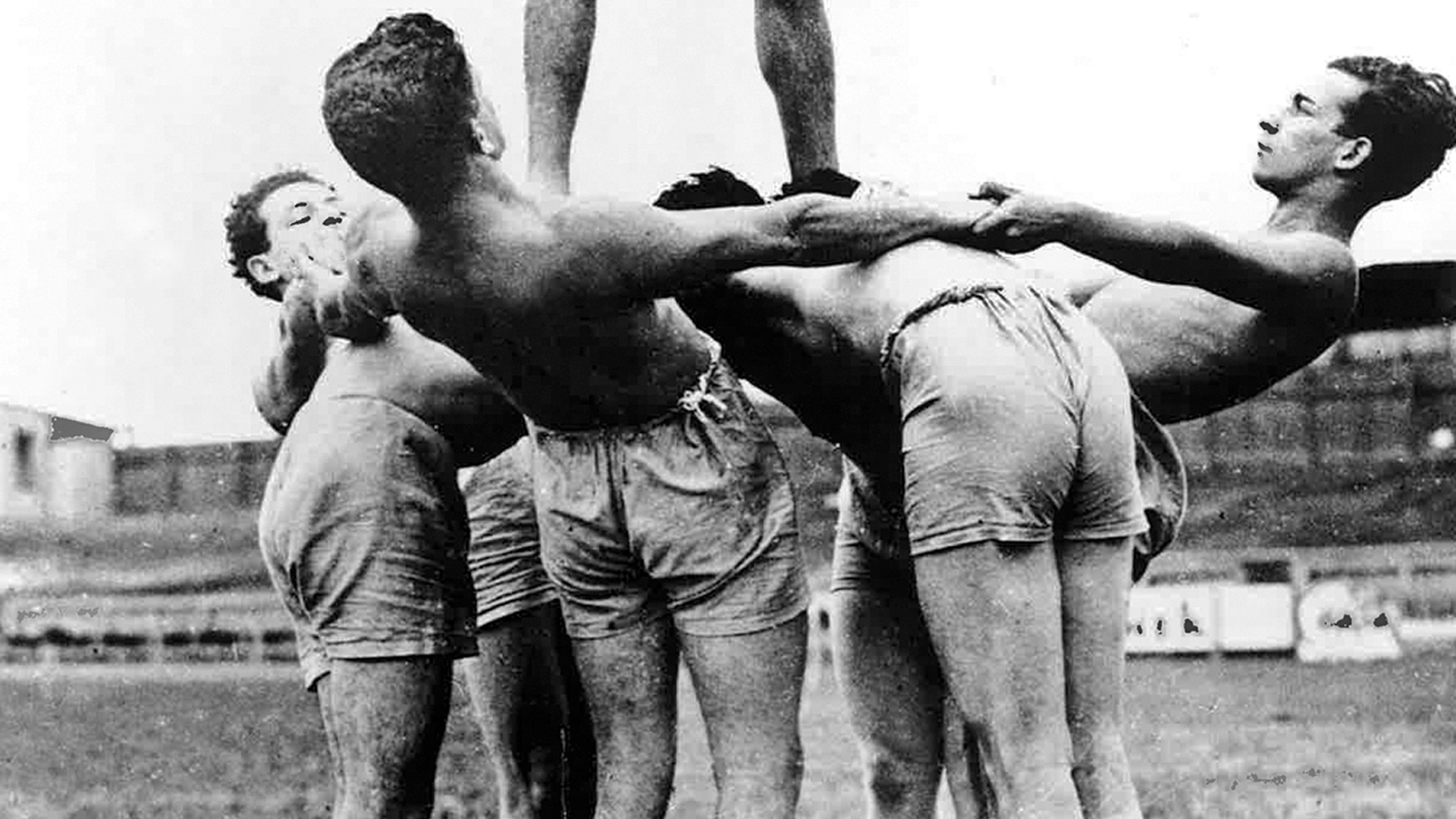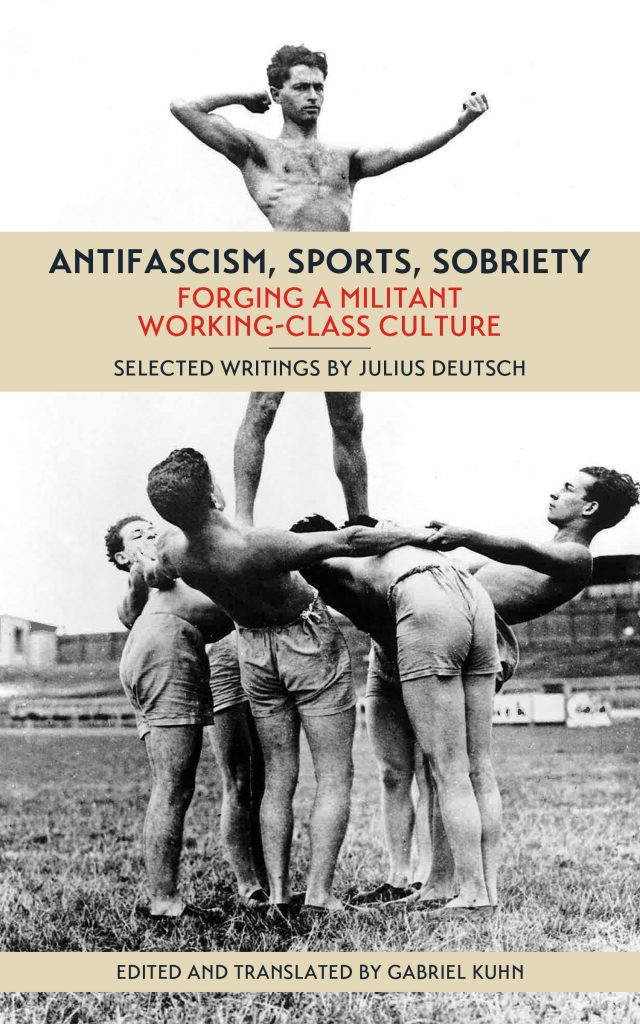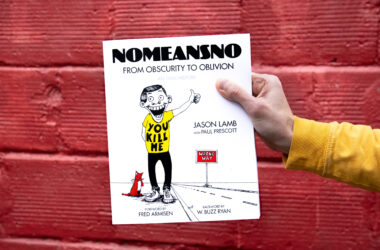By Shirsho Dasgupta
Doing the Rondo
October 20th, 2017
Born in Austria, Gabriel Kuhn grew up in Turkey, Italy, England and the United States till he returned to his country of birth to complete his formal education. He enjoyed a four-year semi-professional career in football in Austria, and in 1996 received a PhD in philosophy from the University of Innsbruck. Active in radical politics since the late 1980s, he is also the author of Soccer vs. the State: Tackling Football and Radical Politics, Playing as if the World Mattered: An Illustrated History of Activism in Sport, Life Under the Jolly Roger: Reflections on Golden Age Piracy, and Sober Living For the Revolution: Hardcore Punk, Straight Edge, and Radical Politics. You can find his work here.
I
had a chat with Gabriel on the origins of the game, its perceptions
across continents, the state of the sport today, alternate clubs and
possibilities of interventions, and the future of soccer itself.
Soccer,
both in England and in the United States, began in the schools and
universities of the affluent. How then did it emerge as a sport that we
generally identify with the working classes?
Football
started out at schools and universities, but factory owners soon
realized its potential in pacifying the work-force: the game channeled
workers’ energies into sports rather than protest, it empowered them,
and factory teams led to a stronger identification with their
employers. All of this applied to players and spectators alike.
Besides, football is very easy to play: the rules are simple and you
need neither expensive equipment nor special grounds. A game of football
can be improvised pretty much anywhere. This is one of the main
reasons why it became the world’s most popular sport.
Finally, once it was professionalized, it provided one of the few viable career options
for working-class folks outside of the factory. Therefore, football
did indeed become a working-class sport in the early twentieth century,
although it was always controlled by the upper classes.
You write in Soccer vs. the State
that in South America, football is generally considered to be “play”
while in Europe it is “work”. What would you say is the reason behind
this distinction? Is it because in South America the whole idea of
“work” itself perhaps has overtones of colonialism, exploitation or
oppression?
I think I referred to common
perceptions regarding the differences between European and South
American football. I myself would not draw such lines, as they are
clearly simplistic. But perhaps these perceptions do include an
anti-colonial element: colonizers, and European nations in general, are
associated with rigid regimes of work, which many see reflected in
their approach to football. German teams, for example, have long been
very successful, but their success has often been attributed to
“discipline”, “organization”, and a “fighting spirit” rather than
technical skills and creativity. In this context, playfulness appears
rebellious, something that has long been associated with South American
teams, particularly the Brazilian one, which indeed played more attractive football than most European teams in the post-World-War-II era. Today, these differences
are largely gone, but the common perceptions persist. When Dunga
became Brazil’s manager in 2006, his focus on defense and efficiency
was considered a betrayal of the Brazilian game, not least in Brazil
itself.
Would you agree that perhaps this conceptualization is strange given the fact that South American fans care more about winning than perhaps Europeans in general? After all, South American fans have a reputation of booing or hissing at their own teams when they do not play well – in a sense they are perhaps, more unforgiving than fans of Europe.
Some
people would say that this is simply a result of South Americans being
more passionate about football than Europeans. Needless to say, we
have to be very careful with such assumptions, as they reek of racial
stereotypes: the “emotional” South American vs. the “rational”
European. Sports commentators still use such clichés routinely: they
criticize non-European players – especially African ones – for their
apparent lack of discipline and tactical understanding, or dirty play,
and for losing their temper.
In general, I don’t think
there is that much of a difference in how supporters relate to the game
globally. There are differences from country to country depending on
numerous factors, and it’s hard to make out any patterns. In Europe,
for example, you find some of the worst fan violence in Sweden, a
country usually known for its level-headed and reserved population.
It’s all rather complicated.
In Soccer vs. the State, you mention that the sport played an important role in the decolonization of Africa, especially in Ghana and Guinea. But how exactly did football help? Is it not, at the end of the day, a “European” sport? Why did the leaders of the anti-colonial movement not seek to use any other game, perhaps even a sport which is native to Africa?
Perhaps
ironically, football helped for the very reason that it wasn’t an
African sport but a global one. Africans being able to compete with
nations from all continents, including colonizing nations, meant a lot
for national self-esteem. Even decades after independence, the symbolic
value of this remained strong. Senegal’s victory over France at the
2002 World Cup, for example, has played a significant role for modern
Senegalese identity, although the country had become independent from
France 42 years earlier. Cameroon player Roger Milla summed up the
overall sentiment well when he commented on Cameroon’s successful run at
the 1998 World Cup: “An African head of state who leaves as
the victor, and who greets with a smile the defeated heads of
state!…It’s thanks to football that a small country could become great.”
Young
Africans, some even children, are lured and often brought to Europe
with deceitful promises. They leave everything behind, often pay huge
sums of money despite their poverty and then in Europe, they find that
they do not have a future in football (which may be for a variety of
reasons). Many call it a “slave trade”, yet Daniel Künzler, whom you
interviewed yourself refuses to call it so. Do you agree? Or do you
think while the situation might not be exactly the same, it certainly
is analogous?
I concur with Künzler when he finds
the term “slave trade” inappropriate to describe the transfer of
African football hopefuls to Europe. It trivializes the horrors of the
slave trade. Young African footballers are not forced at gunpoint to
leave their countries, they aren’t put in chains and crammed onto boats
for journeys many of them won’t survive, their legal status is not
simply that of property, etc. So, there are significant differences.
However,
there are enormous problems involved in the global trade of African
footballing talent, and they are tied to colonial history. Young
African players leave their families and chase their dreams because
they have few other options to improve their lot. Very often this
happens under dubious circumstances. Many young African players arrive
abroad in a very vulnerable position, and the many unscrupulous people
involved in the football industry take advantage of that. Many a gifted
African player end up on the streets of Europe without money or
documents; others are entirely dependent on the whims of erratic club
owners. None of these dynamics will change before the global political
and economic order changes. However, things can be done to mitigate the consequences. Organizations such as Foot Solidaire have done great work.
On that note, today’s footballing academies take in a lot of youngsters, yet of course, only a
few are signed by clubs, especially the bigger ones. Why is it so? Has
our new obsession with data and football analytics something to do
with this trend?
Data and analytics might provide a
new framework for selecting some players and weeding out others, but
the fact that many talented youngsters never earn a professional
contract simply has to do with high competition. The money generated by
football has multiplied during the past twenty-five years, which also
means that more money is invested in youth football and academies.
Today, you have thousands of incredibly well schooled players at the
age of 17 or 18, but there are only so many open spots on the rosters
of professional teams. Many players simply don’t make the cut. And
among those who do, many are out of a contract again within a few years
when new and better players have come up through the ranks.
In
the 1970s, if you made it to the roster of a professional team, you
could count on a professional career of ten to fifteen years as long as
you avoided serious injury. Today, the average career span is three to
four years; there is an enormous turnover. Only the players at the
absolute top can build successful careers into their 30s.
What about the grassroots development programmes? While it is true that they have perhaps “discovered” a lot of talented footballers from remote villages, many of these programmes are funded and run by corporate entities. In India for example, big mining companies encroach upon tribal lands and evict them from their homes and then set up football programmes under a mandate of “Corporate Social Responsibility”. Jacinta Kerketta in a poem highlighted how these programmes are used to lure tribal children away from education because the companies know that an educated child might protest against them.
It
is an excellent poem. I find football to be a wonderful game with lots
of liberating potential, but we have to be realistic: football also
serves, and always has, as an opiate for the masses. There is no doubt
about that.
Programs that supposedly help the poor,
while in fact only creating new forms of dependence and exploitation,
are pervasive, also in football. I am sure that there are people
involved in these programs whose heart is in the right place, and some
of the programs might indeed do some good, for example if they
encourage young girls to play football. But we have to scrutinize them
very carefully – and we should be suspicious every time a program is
sponsored by FIFA or any of its subsidiaries.
With the increase in televised games, more and more people throughout the world are actively watching the game. Yet while a number of developing countries had always followed the sport, fan support seems to be changing. For example, in India while the older generations generally supported Brazil or Argentina during the World Cup, for a majority of today’s youth (who are growing up watching the European leagues) it is more natural to support Germany or England or Spain. Can this be interpreted as the beginnings of a radical universalism – the previously colonized has “forgiven” white Europe and is willing to stand beside it as comrades? Or is it another symptom of a Eurocentric global order?
I think mainly the latter, perhaps with a tint of the former.
In
general, I believe it is a result of the stronger marketing power of
European nations. Asia is the market that rich European clubs woo for
the most right now. Summer tours of the continent have become a main
feature of the clubs’ pre-season routine, although they take an
enormous toll on the players who are already facing an ever more
expanding schedule during regular season. At the same time, European
clubs sign Asian players to secure television time in the players’ home
countries. In the near future, we will see more and more Chinese
players in Europe, for example. The modern football industry follows
the laws of the market.
But, yes, it might also be
the case that “post-colonial” identities are taking shape in formerly
colonized countries, especially among the middle classes. Shedding
anti-colonial sentiments might be a way of saying that you’ve become
equal and that there is no reason to harbor resentment; it is
self-affirming rather than self-deprecating. Perhaps this is a form of
“radical universalism”, although I would leave it to others to make
that argument.
Stadiums previously used to serve as meeting places for the working class. However
today as the prices of tickets continue to rise, football-watching is increasingly becoming an activity for the affluent. As a cheaper substitute, during international tournaments, FIFA generally prepares for a “fan zone” which is basically a viewing area with a big screen. However, entry to these zones, which are always in public spaces, restricted – making these spaces private. So faced with these twin-obstacles, will the working class nature of the game soon be destroyed?
I
would argue that at the level you’re describing (big international
tournaments and the big national leagues) the working-class character
of the game has already been destroyed. In England, most working-class
fans can no longer afford tickets; they gather in the pub to watch games
instead. Football has become popular enough to attract masses of
middle- and upper-class people as customers, and since they have more
money to spend, they receive priority over working-class supporters
(who, of course, are still expected to buy expensive pay-TV packages and
jerseys with sponsors’ logos splashed across the chest). Ironically,
the “working-class charm” of football remains a selling point for the
middle- and upper-class customers. Maybe we can call this
“classploitation”. The good news is that the working-class character of
the game will always survive at the grassroots level: in the alleys,
backyards, and meadows of the planet.
So
now that the majority of soccer fans increasingly depend on
televisions or the radio, can we foresee a situation like the one
described by Borges in his short-story “Esse Est Percipi”?
I
guess we’re entering the philosophical realm, as in: how is the media
affecting our perception of the world? Professional sports is a
theater, no doubt, and there is plenty of deception, from doping to
match fixing to an ever growing disparity in resources and assets. One
reason why people love theater is that deception can make life more
bearable. In situationist terms, modern football is a near-perfect
spectacle. Borges raises the specter in his story.
As a sort of resistance to the “new football economy”, a lot of “alternate” or “fan-owned” clubs have sprung up throughout the world. But should the football fan be content with these alternate spaces? Is it not a tacit acceptance that the mainstream footballing world cannot be recovered from corporate/right-wing interests? Would you say that while alternate clubs are fine, the real fight lies in reclaiming all of football from aforementioned interests?
Of
course, and I think most of the people involved in alternative
football clubs would agree with that. Ideally, clubs run by supporters,
embracing values of solidarity, and not buying into the consumerist
doctrine would form the nucleus of an entirely new sports world.
Needless to say, it is hard to create such a world unless there is
fundamental political, economic, and cultural change, but these clubs
make their contribution in the field of sports – which is a field as
contested and politically relevant as any other, if not particularly so
due to the attention it receives and the passions it arouses.
On
the topic of corporate ownership, what do you think will be the impact
of the success of RB Leipzig in Germany? Germans after all take a lot
of pride in their 51-49 ownership rule. Do you think the Bundesliga
will slowly adopt the Premier League model wholesale?
I
don’t think the Bundesliga will go the way of the Premier League,
because I believe the so-called 50+1 ownership rule – meaning that a
club’s members will always have just over 50% of decision-making powers
– won’t fall. Germans are too aware of it being an important piece of
the puzzle that makes the Bundesliga the most popular league in the
world measured by attendance.
However, the rule is
increasingly undermined in order to do away with the average member’s
influence. RB Leipzig is a prime example. Membership criteria and fees
are so prohibitive that the club has less than twenty members with
voting rights, all of them close associates of Red Bull tycoon Dietrich
Mateschitz.
In other clubs, we face the typical problems of electoral politics: members
may be able to cast votes when administrative positions are up for
grabs (often with only one serious contender), but they have no
influence over the club’s everyday affairs. Furthermore, big sponsors
often enough threaten to withdraw their support if their expectations
aren’t be met. In other words, the 50+1 rule is far from ideal, but it
at least keeps the possibility of a more democratic and participatory
football culture alive, even on the professional level, something
exemplified by FC St. Pauli more than by any other club.
On that note, what are your opinions on the Bosman Ruling?
When
Belgian professional Jean-Marc Bosman went to the European Court of
Justice in the early 1990s because a transfer fee demanded by his club
RFC Liège stopped him from continuing his career in France even though
his contract with RFC Liège had expired, he caused a complete overhaul
of the football transfer system. Not only are players now free agents
at the end of their contracts, but restrictions on signing players from
foreign countries were also scrapped.
The Bosman Ruling strengthened the position of professional footballers vis-à-vis their
employers. That’s positive. At the same time, the ruling had some problematic consequences.
In
football, too, the rich benefit more from “free trade” than the poor.
Nowadays, it is possible for the big leagues to secure all of the
world’s most promising football talent at a very young age, while the
foundation of top-quality football in other countries is eroded. The
same is true on a domestic level: small clubs lose their best players
to the big clubs very early on. As a result, the gap between the strong
and the weak in football grows by the year, economic injustice
increases further, and competition becomes more boring. None of this is
the fault of the Bosman Ruling per se, which was correct, but it also fit the neoliberal agenda perfectly.
Since today’s footballing calendar is fixed according to television schedules, sometimes a team might end up playing 3-4 matches in a space of 8-10 days. What do you think is the toll that it takes on the players themselves?
No one would deny that the toll is enormous. Germany went with a B-team to this year’s
Confederation
Cup in Russia, because the team manager Joachim Löw considered the big
stars overplayed (the fact that Germany won the tournament might
confirm that the stars on the other teams were overplayed, too). All of
the big club teams that play in three competitions each year (the
national league, the national cup, and the continental cup) have large
rosters that allow for rotation among the starting eleven. It’s the
only way to keep up with the schedule.
Needless to
say, you need to have plenty of money to afford a star-studded roster
of 20+ players. It’s yet another factor that contributes to the
increasing gap between the top and the bottom tiers of modern football.
But each game means a lot of money for the rich, which is most
important. Look at the ridiculous decision to extend the World Cup to
48 participating nations. The only good thing is that the football
industry is headed for an overkill: eventually, even the most loyal of
fans will become victims of over-saturation. The biggest hope for
modern football to end is an implosion.
Perhaps the greatest resistance against corporate football has been offered by ultras groups especially in Europe and Latin America. What are the differences and parallels between the ultras in the two continents?
Very
hard for me to say since I have not been able to keep up with the
development of Ultra groups in Latin America. My sense is that Ultra
culture remains centered in Europe – Latin America has its own
supporter cultures. But, obviously, the Ultras’ dedication and ability
to turn even the most boring of games into an event due to their
choreographs, banners, and chants, have attracted football supporters in
Latin America as well. As always, the media likes to focus on the
violence displayed by some Ultras, but the overall culture is very
positive. Many Ultra groups are also clearly anti-racist and
anti-fascist, even if their hierarchical organization, territorial
claims, and macho tendencies clash with leftist ideals.
In
terms of Ultra culture extending beyond Europe’s borders, it might be
most interesting to look to East Asia and North Africa, where the
influence seems strongest, albeit in different ways. In East Asia, it
is mainly the aesthetics that are introduced to the big leagues, while
in North Africa it is the politics – mainly the Ultras’ resistance to
surveillance, police violence, and the political exploitation of the
game – that define much of the supporter culture in the region. The
role that the Egyptian Ultras played in the uprisings of 2011 are only
the most famous example.
Can football, often called an “opiate of the masses” ever serve as an agent of the left? Can it possibly build solidarity given that its essence is competition – something that is often referred to as protracted war?
I
don’t think the competition is the problem. The war metaphors are
silly and overused. Most games we play have a competitive element. It is
what makes them fun. We are competitive beings in the sense that we
define what we are capable of in comparison to what others are capable
of. We would never know if we were fast runners if we didn’t compare our
running speed to that of others, something that children do in a
playful manner. The problem is when competition loses its playfulness
and becomes the engine of all activity. It is not surprising that
football has gone that way since pretty much anything does in a
capitalist society. In a socialist society, the competitive element
would be kept at bay. In fact, football contains many aspects that
contradict it: collaboration, respect, fair play. It also serves as a
universal language, akin to music or dance.
If these
aspects are at the center of the football experience, it can without
doubt contribute to progressive social developments. The alternative
football clubs are a case in point.
Finally, what is the future of the game?
As I said, football will always survive at the grassroots level, as a natural way for people
to get together, exercise, develop social skills, have fun, and so on.
Many things remain to be done to make this experience all-inclusive,
especially with respect to the gender imbalance that still haunts the
sport, but I think there’s been improvement in the last decades and I
hope we’ll continue on this path.
Things are more
difficult at the professional level. There, prospects are dire. The
modern football industry is still exploring and conquering new markets,
it is ruled by a quasi-feudal organization run by crooks, FIFA, and it
will remain exploited both by ruthless corporations and politicians.
However,
as I have also hinted at above, I think that modern football culture
is nearing a tipping point; it is growing too big for its own good.
Eventually, the circus will have replaced the game entirely and the
bubble will burst. This, without doubt, will be a reason to celebrate.
Please note:
Images used in the website are in the public domain and have been
sourced from Wikimedia Commons unless specified otherwise. Other images
have been used with prior permission from the
person(s)/organisation(s)/institution(s) specified in the credits. Any
queries related to such images are to be addressed to the concerned
person(s)/organisation(s)/institution(s) directly.
Doing the Rondo
does not claim ownership of any image. In case of any legal issue, the
editorial team will immediately take down the image when contacted.
Buy Antifascism, Sports, Sobriety: Forging a Militant Working-Class Culture






